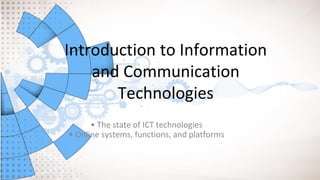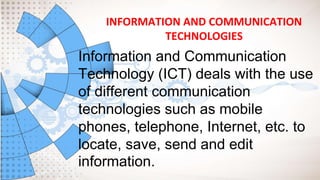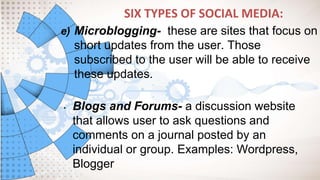This document provides an introduction to information and communication technologies (ICT). It discusses key topics like online platforms, Web 1.0 and 2.0, cloud computing, the internet, and trends in ICT. The main goals are to improve students' understanding of how ICT affects daily life and to learn about features of the modern internet like user participation, social media, and mobile technologies.


























